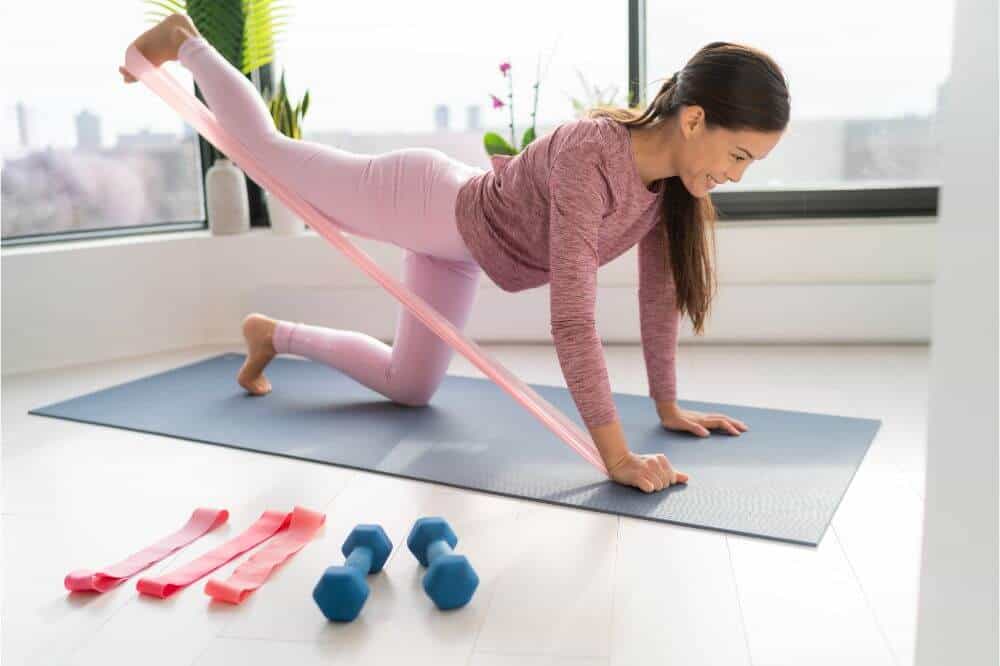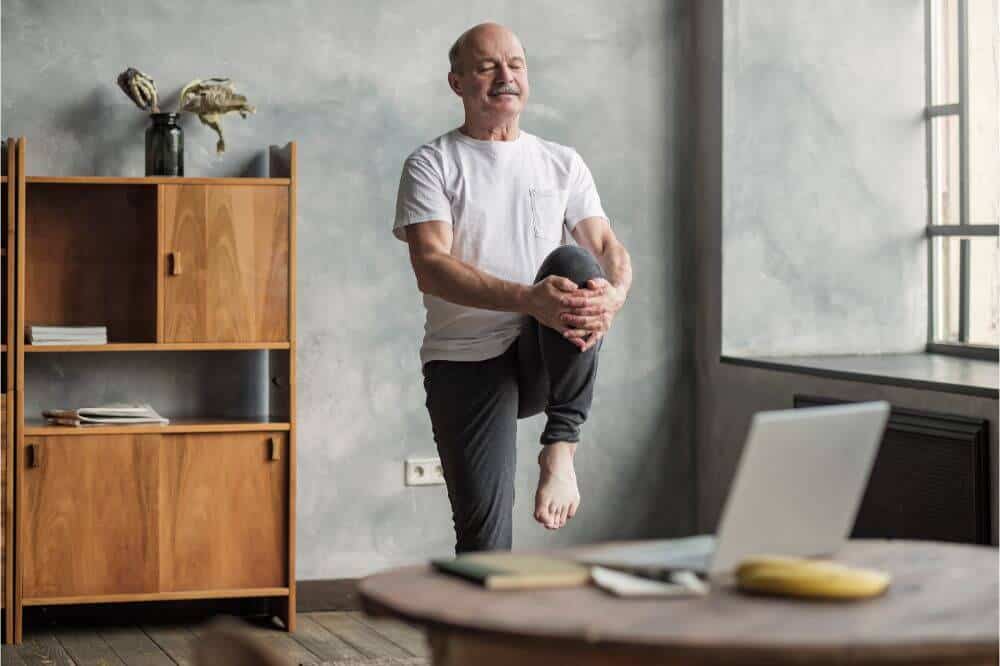The easiest part of getting fit is deciding to do so. With a gym membership, you’ll probably want to get your money’s worth. But a home workout routine can get pushed aside after a week or two when you’re simply too tired after work or chores keep piling up in front of your eyes.
Of course, this isn’t to say it’s impossible to stay on track while using your living room as your gym. Ample preparation is key. Here are the steps that will help you succeed.
Talk to Your Doctor
According to the Centers for Disease Control and Prevention, only 22.9% of the adult population in the U.S. meets recommended fitness guidelines. If you haven’t worked out since your last Phys Ed class in high school, going straight for strenuous cardio exercises might not be the best idea.
To ensure you don’t do more harm than good, consult with your doctor before you embark on your fitness journey. Especially if you have a history of illness or injury, they will be able to advise you on the intensity of your workout, as well as modifications that may be necessary.
Find a Space
If you got the green light from your physician, it’s time to get down to business. Firstly, find the right spot for your workout. If you have an extra room that can serve as a home gym – perfect! But even if you need to push a few pieces of furniture out of the way to make enough room, it’s fine. A designated space will help you build a habit and stay on track.
Get Some Equipment
You don’t have to build a gym in your bedroom; in fact, you don’t necessarily need any equipment to get a great beginner workout. Your body weight will be plenty to challenge your muscles, and household items like water bottles or milk jugs can easily step in as weights. However, a few key pieces of equipment will make things easier and more enjoyable for you, which will help you keep at it.
An exercise mat will boost your comfort on a hardwood floor (and also protect the floor, so your landlord won’t put a stop to your fitness attempts). A pair of weights and a couple of resistance bands will also come in handy, and they take up nearly no space, so they can accompany you in the smallest of apartments.
Next, cute exercise clothes will scream: “It’s time to work out!” every time you put them on. Feeling comfortable while breaking a sweat is also paramount if you’re going to do this every day.
Finally, if you have a bit more room to spare, adding an exercise ball and a jump rope to the mix can bring some variety to your workouts.
Allocate Time
Don’t let your newly acquired equipment collect dust. The next step is allocating time for regular exercise. Unless you add it to your schedule, it can easily become the first thing you sacrifice when you’re busy. Designating a time slot for your exercise will help you turn this activity into a habit. Once your morning or evening workouts have entered the habit territory, you’ll feel reluctant to skip them.
Be realistic when deciding on the length of your sessions. Start small and scale up over time instead of aiming too high right away and getting discouraged.
Generally, about 150 minutes of moderate activity a week is a great start. This can be a combination of strength training and cardio. That means that just about 15-20 minutes a day will suffice for a beginner. If you find it hard to dedicate 20 minutes to this activity, break it up: 10 minutes before you start your day and 10 more after work is just as good. Even implementing small bursts of activity will help create a habit in the long term.
For more substantial results, you’ll need to do more. Those aiming to lose weight are recommended 300 minutes of weekly activity. Take your time getting there. Professionals suggest aiming lower than you think you can do so your physical readiness doesn’t stand in the way of your mental preparedness.
When should this take place throughout your day? That may depend on your goal. According to research, women aiming to lose weight might want to time their workouts in the morning hours, while those wishing to build muscle can utilize the evening better.

Set a Goal
Why do you want to work out? Is it simply to be healthier, or do you have a more specific reason in mind? In either case, setting a concrete goal will help you pick the right exercises and keep you going.
Your goal needs to be SMART (specific, measurable, attainable, relevant, and time-bound) so you can break it down into steps and track your development. Your goal can be anything from losing 10 pounds to working out four times a week or being able to do 50 pushups. In any case, put your progress on paper (or app) as you go.
Remember that your goal isn’t written in stone. If you’re having difficulty, changing your goal is always a better option than losing your motivation and giving up entirely.
Choose Your Exercises
So you’re thinking, I’ve got everything prepared, but how do I start a home workout routine? The next step is choosing a program you feel comfortable with. You can compile a program yourself or utilize the help of an app or online fitness video.
Going the latter route will make it easier to track the time you spend on each exercise and rest in between, so it may be a better choice until you find what works for you. Apps can be especially great for high-intensity interval training (HIIT).
Here are a few things to remember if you decide to create a routine yourself.
- Let your body get used to the activity with a few minutes of warmup
- Start with a manageable routine – gasping for air won’t help anyone
- Pay attention to your form to avoid injury
- Don’t forget to cool down after intense exercise
Depending on your goal, you can pick cardio (aerobic and anaerobic exercises) to increase your stamina, strength training to build muscle, flexibility and mobility training to improve your range of motion, or combine them for the best effect.
Which one should you go for? Truthfully, beginners will benefit from anything they find challenging enough to break a sweat. The best combination for general health and fitness is a combination of cardio and strength training.
Be Gentle With Yourself
You’ll likely get sore muscles in the beginning. Allowing ample rest is essential for your recovery. There will also be days when you simply don’t feel like working out. Having a few alternative activities in mind for these instances is a good idea.
Going for a walk or heart-healthy jog or doing some intense stretching with yoga is better than skipping exercise completely because you’re not feeling your weights today.
The Next Step
At some point, many of us ask, How do I start a home workout routine? Creating an exercise regimen without a gym membership is more than possible, but sticking to it undeniably requires a lot of self-discipline and dedication when your couch is at arm’s length.
So, follow the tips mentioned above instead of jumping right in and then giving up in three days. Good luck!

